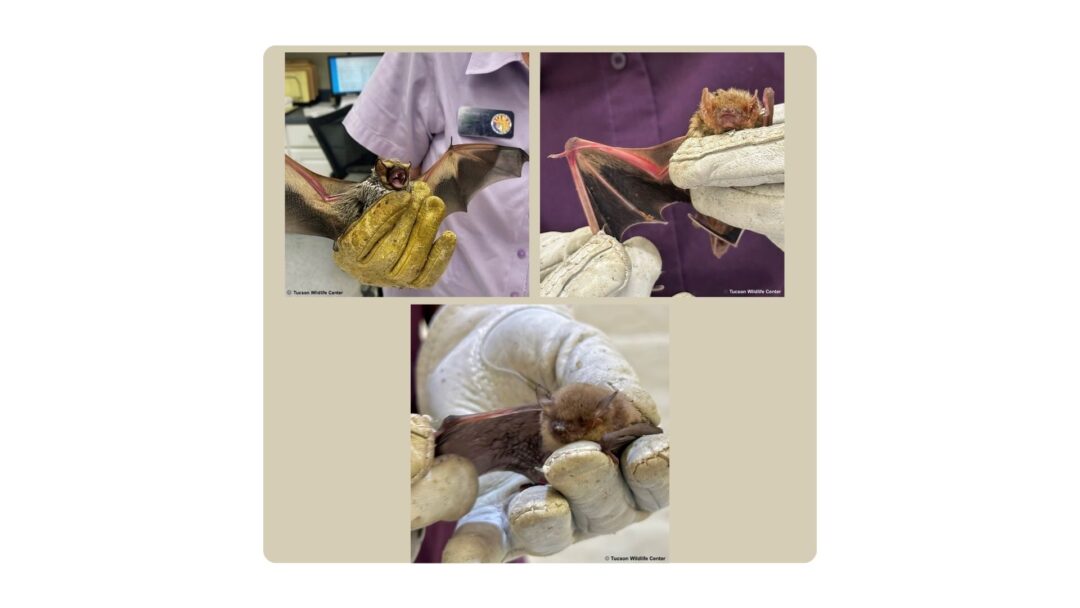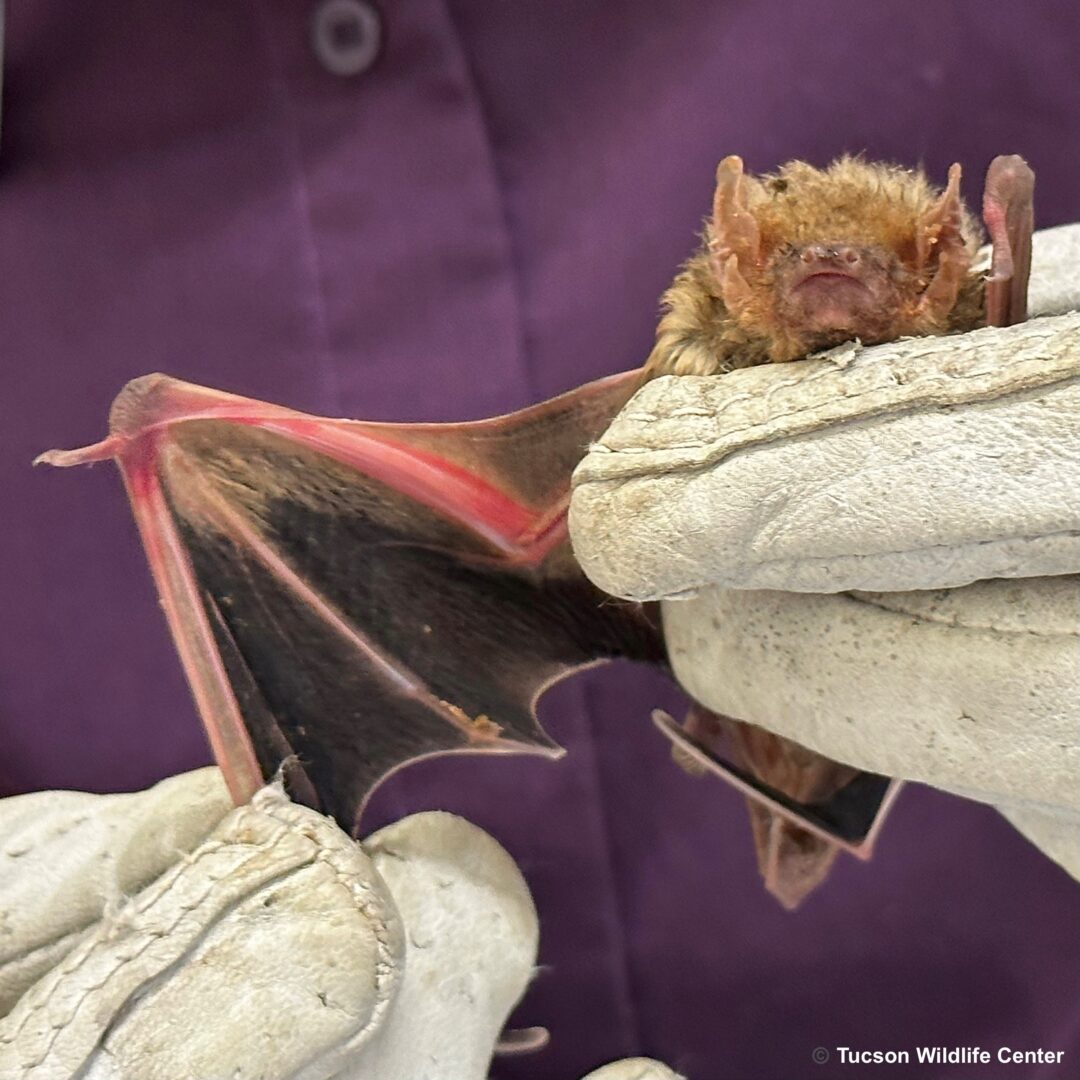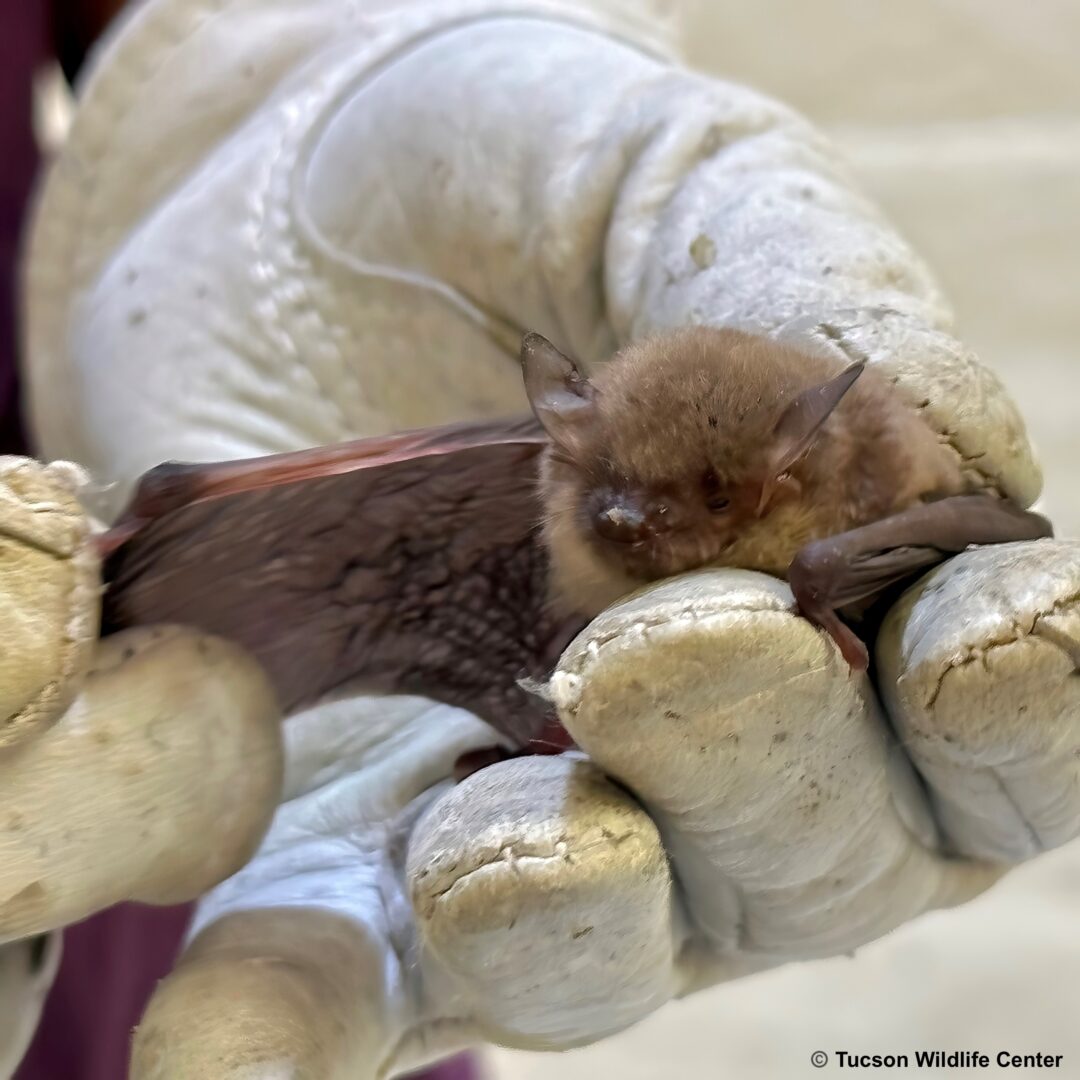
Bats
Did you know Arizona is home to 28 species of bats, second only to Texas in the United States? (At least 18 different species live in and around Tucson.) Bats are a major part of our ecosystem and are very beneficial to humans. They feed on large numbers of mosquitos, other flying insects and arthropods; some bats may consume up to one-half times their weight in insects in a night.* This week, Tucson Wildlife Center treated three different species of bats—the hoary bat, the western yellow bat and the cave myotis bat.
With its distinct salt-and-pepper coloration and luscious glossy fur, the hoary bat may just be the George Clooney of the bat world. A migratory species, they may fly as fast as 13 miles per hour and as high as 8,000 feet during their long-distance migrations.** During the summer, male hoary bats are found in the southwestern U.S., while females are spread across the U.S. and southern Canada. In the fall, females meet up with the males in the Southwest, and both migrate to Mexico or South America.***
Western yellow bats are commonly found in the southwestern U.S. and in Mexico, roosting in the skirt of dead fronds of palm trees. A species of vesper bat (also called evening bat), the western yellow bat has small eyes and a well-developed tail. These bats do not hibernate; activity has been observed year-round.****
During the summer months, cave myotis bats can be found roosting in caves in groups of 2,000-5,000 individuals. If a suitable cave is not available, they will choose alternate areas to roost, including mines, rock crevices, abandoned buildings, barns and under bridges. Some of these will stay in Arizona and hibernate over winter, but most appear to be migratory over short distances.*****
*https://ag.arizona.edu/yavapai/publications/yavcobulletins/Bats%20In%20North%20Central%20AZ.pdf
**https://www.batcon.org/species-spotlight-hoary-bat/
***https://www.nps.gov/sagu/learn/nature/bats.htm
****https://www.batcon.org/bat/lasiurus-xanthinus/
*****https://www.desertmuseum.org/kids/bats/cave_myotis.php
If you would like to help patients like these bats, please click the donate button below:
Another way you can contribute is to visit our “wish list” on Amazon by clicking on the Amazon Wish List button below. We appreciate it, as will all the wild animals in our care!




